Jeffrey Micher
What Else Do I Need to Know? The Effect of Background Information on Users' Reliance on AI Systems
May 23, 2023Abstract:AI systems have shown impressive performance at answering questions by retrieving relevant context. However, with the increasingly large models, it is impossible and often undesirable to constrain models' knowledge or reasoning to only the retrieved context. This leads to a mismatch between the information that these models access to derive the answer and the information available to the user consuming the AI predictions to assess the AI predicted answer. In this work, we study how users interact with AI systems in absence of sufficient information to assess AI predictions. Further, we ask the question of whether adding the requisite background alleviates the concerns around over-reliance in AI predictions. Our study reveals that users rely on AI predictions even in the absence of sufficient information needed to assess its correctness. Providing the relevant background, however, helps users catch AI errors better, reducing over-reliance on incorrect AI predictions. On the flip side, background information also increases users' confidence in their correct as well as incorrect judgments. Contrary to common expectation, aiding a user's perusal of the context and the background through highlights is not helpful in alleviating the issue of over-confidence stemming from availability of more information. Our work aims to highlight the gap between how NLP developers perceive informational need in human-AI interaction and the actual human interaction with the information available to them.
Neural Polysynthetic Language Modelling
May 13, 2020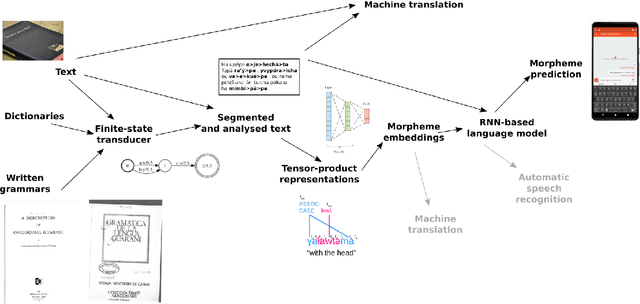
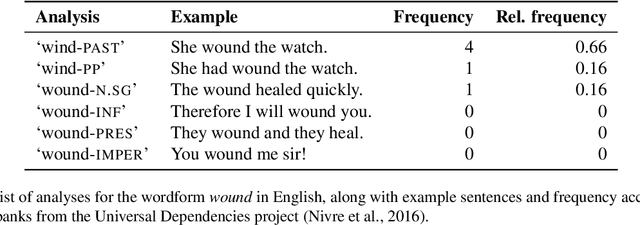

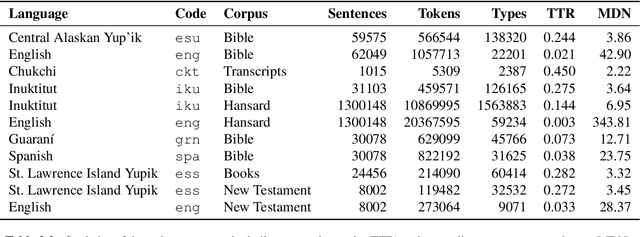
Abstract:Research in natural language processing commonly assumes that approaches that work well for English and and other widely-used languages are "language agnostic". In high-resource languages, especially those that are analytic, a common approach is to treat morphologically-distinct variants of a common root as completely independent word types. This assumes, that there are limited morphological inflections per root, and that the majority will appear in a large enough corpus, so that the model can adequately learn statistics about each form. Approaches like stemming, lemmatization, or subword segmentation are often used when either of those assumptions do not hold, particularly in the case of synthetic languages like Spanish or Russian that have more inflection than English. In the literature, languages like Finnish or Turkish are held up as extreme examples of complexity that challenge common modelling assumptions. Yet, when considering all of the world's languages, Finnish and Turkish are closer to the average case. When we consider polysynthetic languages (those at the extreme of morphological complexity), approaches like stemming, lemmatization, or subword modelling may not suffice. These languages have very high numbers of hapax legomena, showing the need for appropriate morphological handling of words, without which it is not possible for a model to capture enough word statistics. We examine the current state-of-the-art in language modelling, machine translation, and text prediction for four polysynthetic languages: Guaran\'i, St. Lawrence Island Yupik, Central Alaskan Yupik, and Inuktitut. We then propose a novel framework for language modelling that combines knowledge representations from finite-state morphological analyzers with Tensor Product Representations in order to enable neural language models capable of handling the full range of typologically variant languages.
A Summary of the First Workshop on Language Technology for Language Documentation and Revitalization
Apr 27, 2020
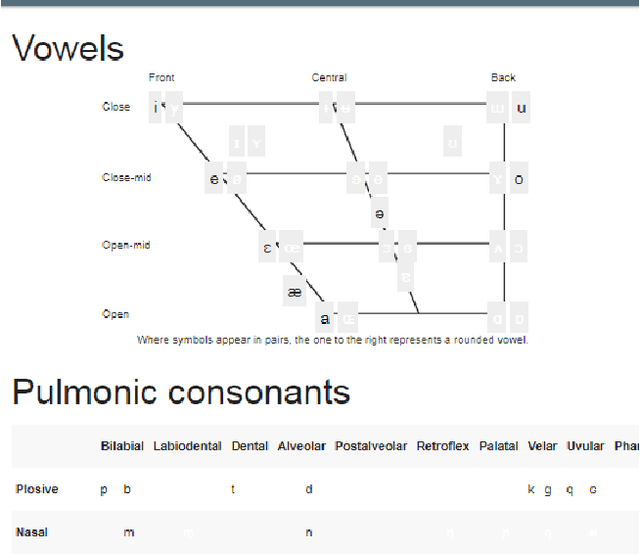
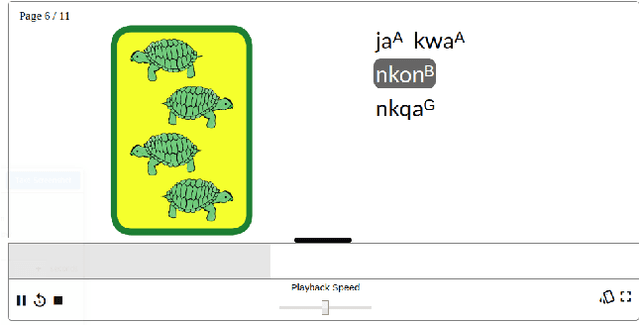
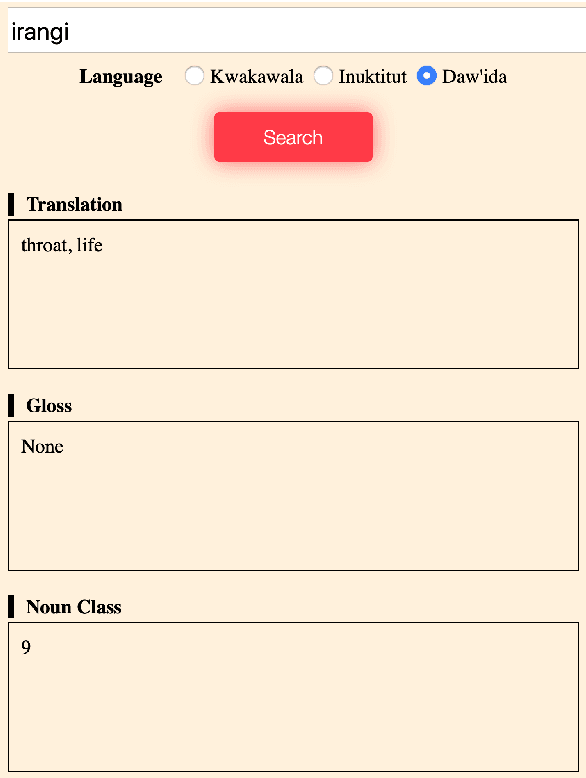
Abstract:Despite recent advances in natural language processing and other language technology, the application of such technology to language documentation and conservation has been limited. In August 2019, a workshop was held at Carnegie Mellon University in Pittsburgh to attempt to bring together language community members, documentary linguists, and technologists to discuss how to bridge this gap and create prototypes of novel and practical language revitalization technologies. This paper reports the results of this workshop, including issues discussed, and various conceived and implemented technologies for nine languages: Arapaho, Cayuga, Inuktitut, Irish Gaelic, Kidaw'ida, Kwak'wala, Ojibwe, San Juan Quiahije Chatino, and Seneca.
 Add to Chrome
Add to Chrome Add to Firefox
Add to Firefox Add to Edge
Add to Edge